How are dimmable LED lamps arranged and working, unlike ordinary ones?
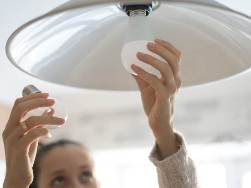 An ordinary non-dimmable LED lamp, if we are talking about a quality product, contains in its basement a miniature step-down converter for mains voltage, the so-called pulsed DC-DC converter.
An ordinary non-dimmable LED lamp, if we are talking about a quality product, contains in its basement a miniature step-down converter for mains voltage, the so-called pulsed DC-DC converter.
The task of this unit is to obtain an alternating mains voltage (220-230 volts), first rectify it into a constant voltage, and then convert this constant voltage to a low constant voltage at the lamp output, and the magnitude of the received output voltage must exactly match the installed load, i.e. a chain of LEDs, which stands in this particular lamp. This step-down DC-DC converter inside a non-dimmable LED lamp has a stabilized output, which means that with any deviation (within reasonable limits) of the current value of the supply voltage from ordinary 220-230 volts, the output will still be ...
How to use and measure illumination with a light meter
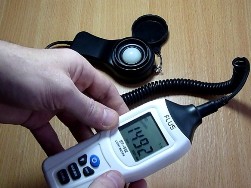 A photometric instrument for measuring illumination is called a light meter. In addition to direct illumination, many light meters also measure brightness, and some measure the ripple coefficient of light. These measurements are carried out in order to determine the quality of light sources, as well as the characteristics of lighting at the workplace and at home.
A photometric instrument for measuring illumination is called a light meter. In addition to direct illumination, many light meters also measure brightness, and some measure the ripple coefficient of light. These measurements are carried out in order to determine the quality of light sources, as well as the characteristics of lighting at the workplace and at home.
The fact is that light affects our eyes and mood. Dim light or light with significant pulsations causes eye strain, fatigue, depression ... To prevent this, the light must be properly configured, the lamps must be of good quality. In achieving these goals, the light meter also helps. The photosensor of the light meter senses the visible radiation directed at it, which initiates a current in the circuit of the measuring device, the magnitude of which is proportional to the illumination. Thus, the magnitude and other parameters of this current can be judged on the illumination ...
FILAMENT LED lamps - device, types, characteristics, advantages and disadvantages
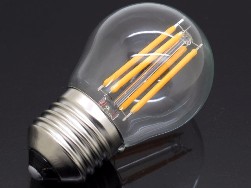 In 2008, the Japanese company Ushio, specializing in the manufacture of lighting equipment, first proposed the idea of creating LED lamps that would be as close as possible to classic incandescent lamps. The innovation was called “Filament Led”, because the word “filament” in translation from English means “filament”.
In 2008, the Japanese company Ushio, specializing in the manufacture of lighting equipment, first proposed the idea of creating LED lamps that would be as close as possible to classic incandescent lamps. The innovation was called “Filament Led”, because the word “filament” in translation from English means “filament”.
Bulbs of this type are colloquially called "filament" or "LED incandescent lamps," although in reality they are just LED lamps, just the LEDs in them are very small, specially designed for this particular technical solution. The idea of creating this type of LED lamps was born out of a need for decorative lighting. At first, these were not very bright lamps; their luminous flux would not be enough to ensure full lighting ...
 Most often, speaking about the degradation of the LED, they mean the process of a gradual decrease in its brightness due to poor cooling of the crystal. Under the concept of “degradation of the LED” can also be meant the premature arrival of a semiconductor light source inappropriateness or a change in the original color temperature.
Most often, speaking about the degradation of the LED, they mean the process of a gradual decrease in its brightness due to poor cooling of the crystal. Under the concept of “degradation of the LED” can also be meant the premature arrival of a semiconductor light source inappropriateness or a change in the original color temperature.
However, degradation can be caused by various reasons, despite the fact that the result always looks the same - an unacceptable decrease in the brightness of the LED or in general the cessation of light emission in response to a power supply. LED degradation can be a real problem where color accuracy is crucial, such as in hospitals, exhibition halls, and museums. Let's look at the causes of LED degradation.So, as we have already found out, the aging process of an LED is called degradation. First of all, this is reflected in a decrease in brightness ...
Calculation, selection and connection scheme of the controller for RGB-tape
 RGB tapes are designed to create adjustable backlighting. Using the controller, you can set the hue, brightness of the glow of the LED strip or choose a program for dynamic color change. Let's talk about how to choose an RGB controller and how to connect it.
RGB tapes are designed to create adjustable backlighting. Using the controller, you can set the hue, brightness of the glow of the LED strip or choose a program for dynamic color change. Let's talk about how to choose an RGB controller and how to connect it.
Multi-color LED strips consist of SMD 5050 type LEDs in the housing of which there are three crystals, each of which glows in a specific color. As a result, each LED can emit an almost unlimited number of shades. There are RGB-tapes, which consist of single-color LEDs of other types, for example, SMD 3528 or others. In them, each LED shines in one color. Their use and controllers for them are essentially no different from the previous view.Power is connected via 4 wires(3 colors and general plus). You can connect each of the colors directly ...
How to calculate and choose a power supply for a 12V LED strip
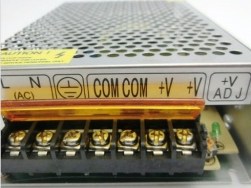 LED strip allows you to organize lighting and lighting. When using models with 220V power, a small adapter with a diode bridge inside is needed to connect. But to connect low-voltage LED strips to 12V or 24V, you need a power supply. And for multi-color models, there’s also a controller. We will talk about how to choose and calculate the power supply for the LED strip in current and power in this article.
LED strip allows you to organize lighting and lighting. When using models with 220V power, a small adapter with a diode bridge inside is needed to connect. But to connect low-voltage LED strips to 12V or 24V, you need a power supply. And for multi-color models, there’s also a controller. We will talk about how to choose and calculate the power supply for the LED strip in current and power in this article.
All of the following is true for a common 12V LED strip, as well as for models with a 5V or 24 volt supply voltage. Before proceeding to the calculation of the power supply for the LED strip, you need to determine where it will be installed, it depends on which option to pay attention to. According to the cooling method, two types of power supplies are distinguished: with active cooling and with passive cooling. Active cooling consists of radiators and a fan ...
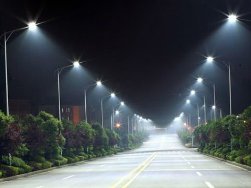 Very sophisticated, capacious, often quite powerful lighting systems are always needed to illuminate streets and industrial premises. In connection with the data, which has already become a traditional state of affairs, a logical question arises: is it possible to make these systems less energy-intensive, more economical, and so that at the same time they would remain sufficiently durable.
Very sophisticated, capacious, often quite powerful lighting systems are always needed to illuminate streets and industrial premises. In connection with the data, which has already become a traditional state of affairs, a logical question arises: is it possible to make these systems less energy-intensive, more economical, and so that at the same time they would remain sufficiently durable.
The answer to this question is logical: yes, this is possible if the transition to more modern, more advanced and economical light sources is ensured. It is already clear (based on at least 15 years of experience) that these new light sources have a very high working resource, and their optical characteristics are preserved for at least 10 years. We are talking about LED light sources. Until recently, a variety of discharge lamps have traditionally been used everywhere for street and industrial lighting ...
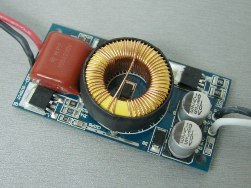 LEDs are the most efficient of all common light sources to date. Problems also lie behind efficiency, for example, the high requirement for the stability of the current that feeds them, the poor tolerance of complex thermal operating conditions (at elevated temperatures). Hence the task of solving these problems. Let's see how the concepts of power supply and driver differ. To begin with, let's delve into the theory.
LEDs are the most efficient of all common light sources to date. Problems also lie behind efficiency, for example, the high requirement for the stability of the current that feeds them, the poor tolerance of complex thermal operating conditions (at elevated temperatures). Hence the task of solving these problems. Let's see how the concepts of power supply and driver differ. To begin with, let's delve into the theory.
A power supply unit is a generic name for a part of an electronic device or other electrical equipment that supplies and regulates electricity to power this equipment.It can be located both inside the device and outside, in a separate case. A driver is a generic name for a specialized source, switch, or power regulator for specific electrical equipment. There are two main types of power sources ...
